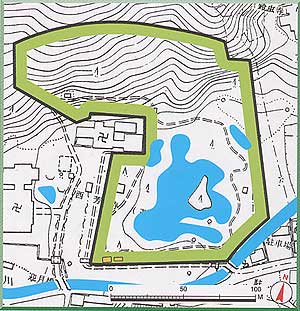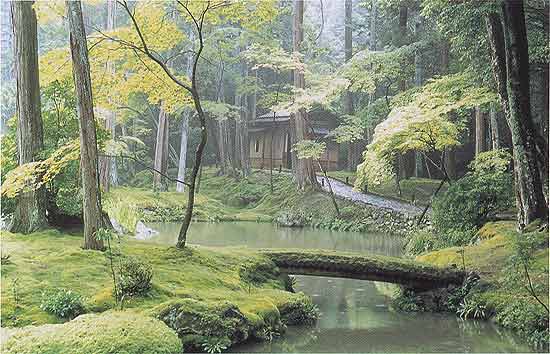| JAPANESE | |
| K. Saiho-ji (Koke-dera) | |
| The great garden which exerted a great deal of influence on the later gardens | |
| Establishment: The middle of the 14th century (1339) | |
| According to the tradition, Saiho-ji was originally built during the Tenpyo Period (729-749) by the monk Gyoki, and later in 1339, was restored and converted into a Zen temple by the monk Muso Soseki. When the temple was first restored, on the level portion was a garden with a pond, trees, flowers and buildings, e.g. the two-storied Ruriden, while a karesansui (dry landscape) style rock garden known as the Koinzan and the Shitoan
(meditation hall) were built on the mountainside; the Shukuentei was constructed
at the summit with the most scenic view. Although the original buildings were lost when put to the torch in 1469, the garden designed by Muso Soseki, with its moss-covered landscaping and rock works, survives, and is regarded as an excellent garden even after the templen declined. The teshouse, known as the Shonantei, was built between the late 16th and early 17th century. In garden history, the garden at Saiho-ji is important because it is the earliest example in Japan which contained intergreated buildings, strong stone works and viewpoints. It exerted a great deal of inflence on later gardens, including those at Rokuon-ji and Jisho-ji. |
 |
 |
|
| Photo by Kanzaki Junichi | |
Map of "Historic Monuments of Ancient Kyoto" |
|